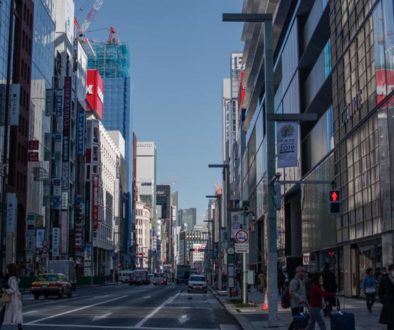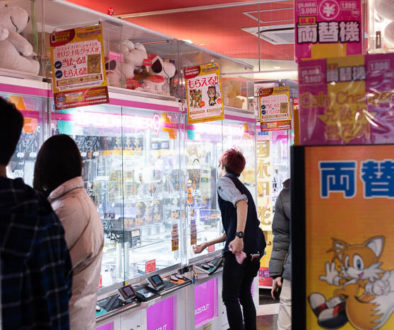Asakusa is the historical area of Tokyo. Considered shitamachi, or downtown, it is one of the most popular places for sightseeing. While Tokyo is known for being one of the most populated cities in the world, Asakusa is like a small town within the city where everyone knows each other. Explore its roots with us by going through its history, landmarks, points of interest, and, of course, its best bites.
History
There are many theories to explain the origin of Asakusa’s name, literally “short grass”. One of the theories is that it originated when the area was still part of the Musashi Province. People adopted the name to refer to the short grass that was always present in the area.
In the 6th century, Asakusa was a fishermen’s village, as it is close to the Sumida River.
The legend says that in 628 the Hinokuma brothers were fishing and caught a statuette of Kannon Bosatsu, the Goddess of Compassion. The two brothers brought it to the village and showed it to one of the main lords of the area. He recognized the Goddess and, together with the brothers, decided to honor her by building the Senso-ji Temple, one of Asakusa’s landmarks today.
During the Edo Period (1603-1868), when the political and economic powers moved from Kyoto to Tokyo, the government rice warehouses were relocated to Kuramae, one station away from Asakusa. This helped Asakusa grow and become famous. To accommodate for the rise in tourism, the people who helped with the temple were allowed to open shops and stalls selling food and souvenirs. This is when Nakamise, the shopping street between the Kaminarimon Gate and the main Senso-ji hall, was created.
After World War II, Asakusa was destroyed and, when finally rebuilt, it was decided to keep a traditional atmosphere in the area, so that even now we can appreciate the old soul of Tokyo.
Landmarks
Senso-ji Temple
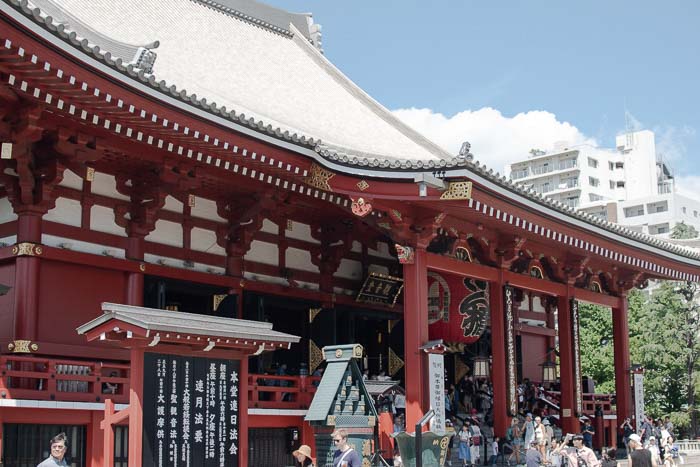
It is the oldest and one of the most famous temples in Tokyo. The main hall was completed in 645 and the Kaminarimon Gate was erected right after. Unfortunately, the complex was destroyed during World War II. When being rebuilt in the 60s, the statues of Fujin, the God of Wind, and Raijin, the God of Thunder, were added to the gate. Between the Gate and the Main Hall there is the Nakamise street, a shopping street that is 250 meters long.
During the daytime, Senso-ji is packed with tourists. If you want to explore the temple in a quiet atmosphere, we suggest going after dinner. The shops are closed, most of the tourists are gone, and you can enjoy the mystic side of Asakusa: the red, white, and gold hues of the temple are striking and beautiful against the night skies.
Hoppy Street
Just a few minutes away from Senso-ji Temple there is Hoppy Dori, or Hoppy Street.
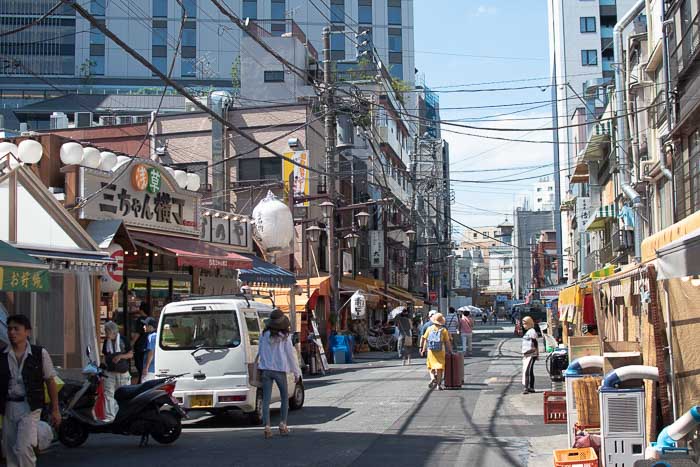
This place is famous for all the small izakayas that open adjacent to the street. The name refers to the Hoppy drink, a non-alcoholic juice that tastes like beer and which is often mixed with shochu, a liquor distilled from grain. Hoppy Street is also known as Nikomi Dori, or beef stew street, as all the izakayas here make their own special stew.
On Hoppy Street, it is easy to find the locals chatting about horse racing, and Japanese tourists drinking from the early afternoon, especially during weekends.
Feel the vibes of old downtown Tokyo while sharing a couple of dishes and drinks like a local!
Kappabashi
Also called Kitchen Town, it is a street with more than 100 kitchenware shops. It is located between Asakusa and Ueno, just 10 minutes walking distance from Senso-ji Temple.
The shops started gathering here at the beginning of the 20th century.
The origin of the name is not clear, but it probably refers to the fact that after a rainy day the residents used to hang their raincoats, or kappa, next to the bridge. It is also associated with the folkloristic “youkai” or demon called Kappa, a mix of a turtle and a human, which can be seen everywhere in Kitchen Town. May sound crazy, but look for them when you go!
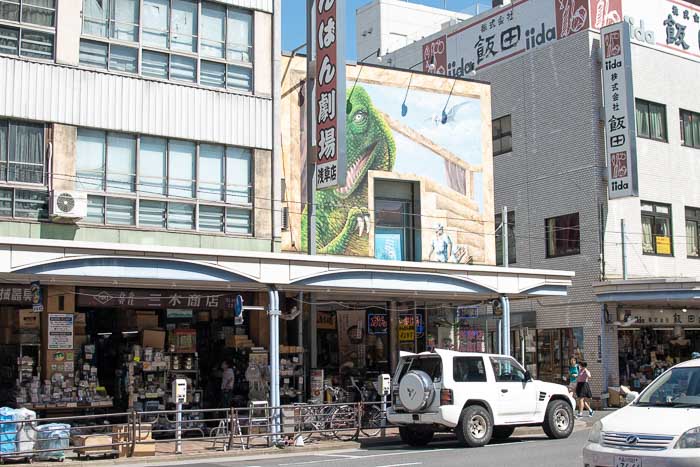
In Kappabashi you can find all kinds of tools and utensils, sake and tea sets, knives and also wax food sample shops. In Tokyo it is common to see food samples in the restaurant’s displays. They are so realistic that they will make you hungry! To shop online, try Ninja Kitchen Market, or you can also check out our Kappabashi aritcle for more detail.
If you would like to virtually visit this neiborhood and shop cookware, try our online shopping experience as well.
Hanayashiki
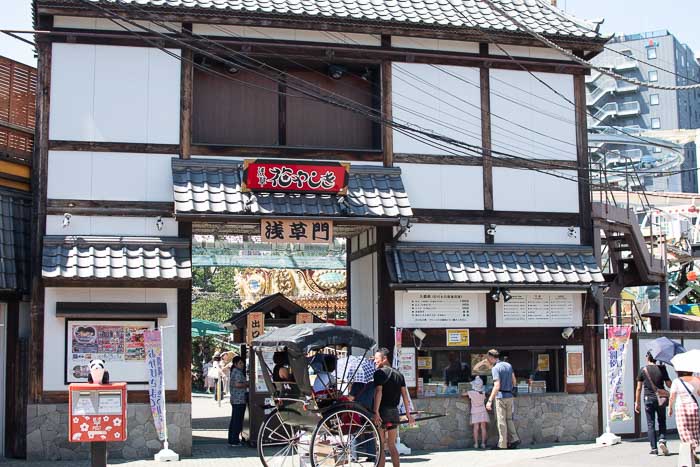
Opened in 1853, it is the oldest amusement park in Japan.
It used to be a flower park, then a zoo, and eventually it became an amusement park.
It is very close to Senso-ji Temple. So close, in fact, that you can actually see the Space Shot behind the main hall! To get a nice view of Asakusa, try the Bee Tower, where you can slowly spin around and take cool pictures.
Forget about Disney Land and try this old-fashioned park and all of its attractions!
Tokyo Skytree
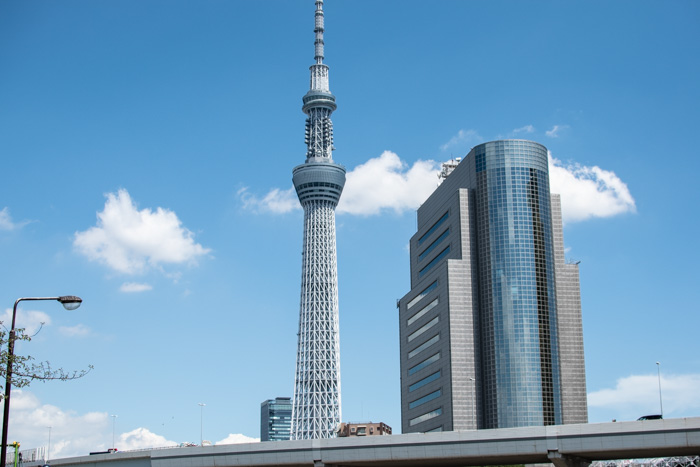
At 634 meters, it is the tallest building in Tokyo.
The height isn’t random. In fact, the area was part of the Musashi no Kuni, or Musashi Province. In Japanese Musashi can be written with the kanji of 6, 3 and 4, making the sound mu-sa-shi.
Inside Skytree there is a shopping mall where you can find brand clothing, souvenirs, restaurants, an aquarium, and many other things. Of course, the major attraction is the elevator that goes to the top, from here you will have the best view of Tokyo.
There are several kinds of tickets to get to the observatory deck, and it is open from 8am to 10pm: http://www.tokyo-skytree.jp/en/ticket/
What to do in Asakusa
Yakatabune Cruise
The Sumida River is right in the middle of Asakusa. The river itself is very beautiful and you must see it when in the area. To enjoy it best, go on a Yakatabune Cruise. It is a floating restaurant where you can have delicious food and alcohol while enjoying the sights of many famous spots in Tokyo. There are multiple companies running these cruises so you will not have a hard time finding one. Prices and services may vary depending on the company that you choose.
Kamiya Bar
The oldest western style bar in all of Tokyo, established in 1880. Here you can peek in and see what life is like for the average Japanese working class. They have an original drink called the Denki Bran, or electric brandy, which is a sweet blend of wine, gin, and brandy. Give it a shot; it is a lot better than it sounds! One last thing – prepare to get drunk; the drink is pretty strong!
Address: 1 Chome – 1 – 1, Asakusa, Taito
Amuse Museum / Bar Six
Very close to Sensoji Temple is the Amuse Museum. It was made under the notion that world peace could be achieved through environmental conservation. In the museum you will see many old kimonos patched up multiple times. The kimonos serve as an analogy to conservation: things (and resources) can be re-purposed into several different things when reused. There are also shamisen (a three-stringed Japanese musical instrument) performances, many ukiyo-e, or traditional Japanese paintings, that depict how life was during the Edo Period, and so on.
On the top floor there is a bar called Bar Six. Here you can enjoy fine cocktails all while having a spectacular view of the Sensoji Temple, the Asakusa area, and the Sky Tree as well!
Address: 2 Chome – 34 – 3, Asakusa, Taito
Kawarana
Ever wonder what it feels like to break through layers of stones like you see martial artists do? Well, you have come to the right place. At Kawarana you will be taught by the best how to land such a punch for a decent price. After the lesson, it’s time for action! You can pick how many layers you want, and strike! This is bound to be a good time, and maybe it will help get rid of that stress you’ve been holding in for a long time!
Address: 2 Chome – 27 – 17, Asakusa, Taito
Asakusa Kingyo
During the summer, Japan has a lot of famous summer festivals. These have many attractions, such as lotteries, ring tossing, target shooting, and much more. There is one, however that sticks out the most, and it is called Kingyo Sukui. This game is very simple: there will be many kingyo, or goldfish, swimming in a tank, and your objective is to catch as many as you can with a scooper made of paper. When your paper tears, the game is over. At Asakusa Kingyo you can enjoy this game year round, so get in the festival mood and visit this store!
Address: 2 Chome – 7 – 13 Asakusa, Taito
Kimono rental
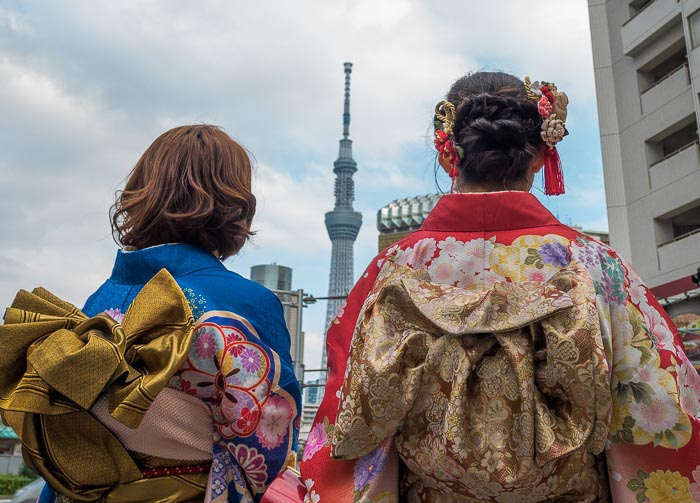
Asakusa has plenty of kimono rental shops. Wear a beautiful kimono and take a picture in front of Kaminarimon gate, or in the Sumida Park with the Skytree in the background. Our suggestion is to go to Asakusa Shichi-henge. It is a recycled kimono shop where you can rent a kimono for a very reasonable price. They also have a geisha makeover experience for those of you who are interested.
Address: 2 Chome – 29 – 21 Asakusa, Taito
Rickshaw
Enjoy a ride around Asakusa in a traditional Japanese taxi, or rickshaw. You can choose the plan based on where you want to go and the time, and have a guide take you around the area. With your kimono on, it will be even more fun.
You will see a lot of rickshaw boys in front of Kaminarimon gate calling you for a ride. It is a rare opportunity in Tokyo so don’t miss the chance.
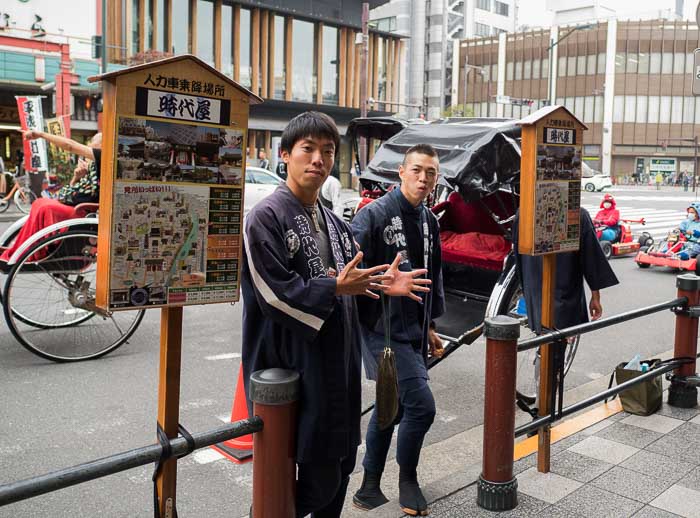
Geisha performance
Asakusa is one of the few places in Tokyo where you can still see real geishas. There are several options but, one of the most accessible ones are shows at the Asakusa Culture Center. It is not a private performance, but it is free. Check on the calendar before you go: http://e-asakusa.jp/en/culture-experience/5054
What to Eat in Asakusa
Wagyu Beef
Gunma Sodachi ($$-$$$)
This restaurant is famous for their fresh Joushuu Wagyu from Gunma Prefecture, located a little north of Tokyo. You can enjoy the wagyu either as yakiniku, where you can grill your own meat to your preference, or as sukiyaki (a hot pot dish). The prices are reasonable, the meat is amazing, and there is an all you can drink option as well!
Address: 1 Chome – 34 – 4, Asakusa, Taito
Sushi
Sushi Hisaichi ($$$)
Great sushi with great interior and exterior decor. This sushi restaurant is one of the hidden gems in Asakusa, as it is a little far from the train station, but it is definitely worth the walk! Once inside you can enjoy quality sushi, either in omakase style, where the chef will decide what you eat, or you can just order what you like.
Address: 3 Chome – 18 – 8, Asakusa, Taito
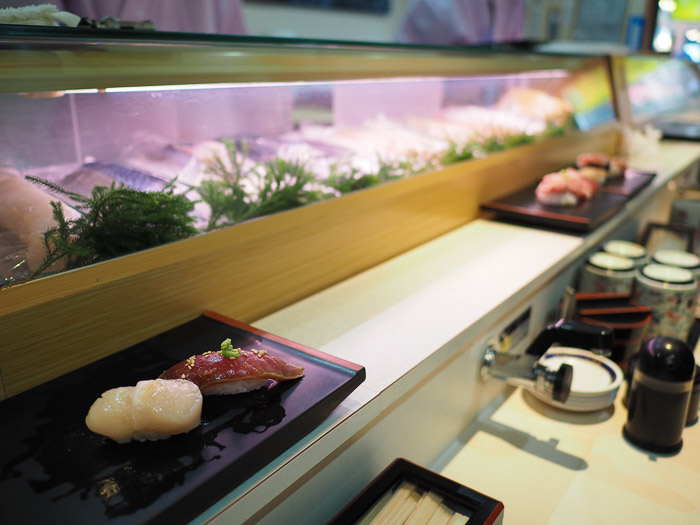
Ramen
Fuji Ramen ($)
A new type of ramen is born. Try out the store’s original “neo-style” soy-based ramen.
The owner studied ramen in many different shops until he came up with this ultimate recipe. Fuji Ramen is also featured on the Ramen Walker Magazine (yes, we have a magazine dedicated to ramen!) and is very good, so we highly recommend it for you ramen lovers out there!
Address: 1 Chome – 24 – 5 Asakusa, Taito
Soba
Yabusoba ($-$$)
If you have not tried soba yet, this is definitely the spot! Here you can enjoy handmade soba noodles at a reasonable price. They also have larger sizes for those of you who are super hungry. They have other traditional side dishes that you can try as well. Yabusoba recently moved here from another area, so this is the start of its new legacy, and you can be part of it.
Address: 2 Chome, 11-9, Kaminarimon, Taito,
Tempura
Tentake ($-$$)
For some mouthwatering tempura, we would recommend Tentake, where you can choose from vegetables, fish, and kakiage (a mixture of multiple ingredients, usually vegetables). For those of you who have never tried tempura before, we recommend the ten-don, or tempura rice bowl. It is the restaurant’s specialty, and once you have a taste, you will understand why. Warning: the portions are big, so make sure to go hungry!
Address: 2 Chome – 4 – 1, Asakusa, Taito
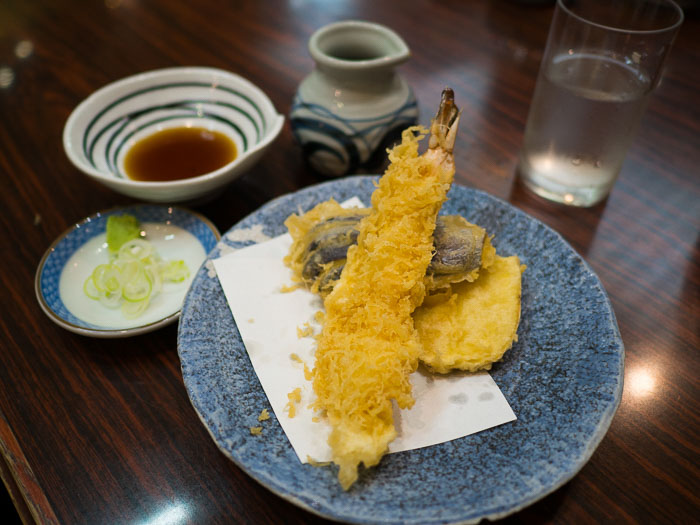
Tonkatsu
Yutaka ($$)
Tonkatsu is a very popular Japanese dish for travelers. It is basically a Japanese style pork cutlet. The tonkatsu here is reasonably priced, perfectly sized, and gentle on your stomach. Yutaka is said to be the best tonkatsu place in the Asakusa area, so you may have to wait for a little in line, but once you taste what they have to offer, you will forget all about the wait you just had. Yes, it is just that good.
Address: 1 Chome – 15 – 9, Asakusa, Taito
Forget about the modern lifestyle and spend one day in the old soul of Tokyo. Immerse yourself in history, enjoy traditional Japanese foods, and create some of the best memories of your trip in Asakusa.
Let us know what you think!

